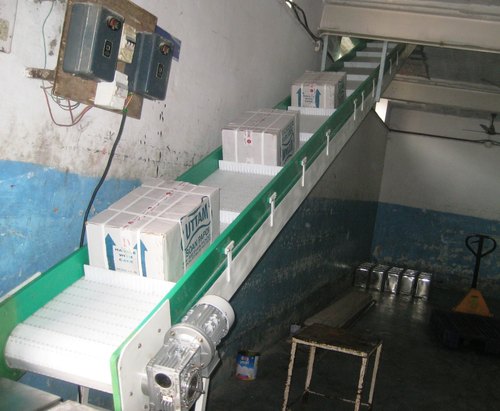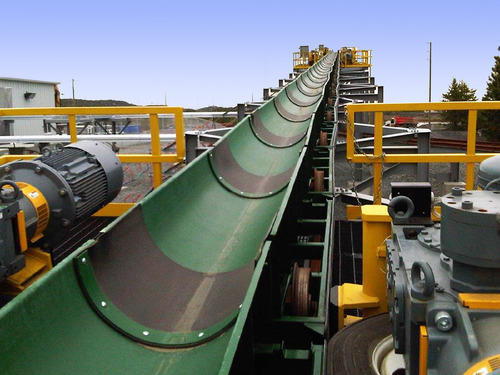
Food, pharmaceuticals, chemical industries, packaging industries, salt, cement, coal, biomass, agriculture, gypsum, and other industries that require industrial-grade equipment to convey free-flowing bulk materials require screw conveyors. Screw Conveyors are used to transmitting dry, free-flowing, semi-fluid, and sticky bulk materials in a range of applications. These conveyors are used to transport a wide range of materials with a high degree of flowability. Screw conveying is not ideal for sticky or stingy materials.
Screw conveyors have several advantages that make them ideal for use in an application of industries. Design simplicity, ease of building, and maintenance are only a few of the benefits frequently highlighted in the application of its use. Material properties, on the other hand, frequently dictate the decision of its selection. Dusty, hot, or foul-smelling materials are frequently conveyed by this type of conveyor system, which can be readily dust-proofed by jacketing the trough.
-The Screw Conveyor’s History
In the third century B.C., Archimedes designed the first screw conveyor. It was used to irrigate crops and remove water from ships. A hollow cylinder with a center shaft and a spiral attached to the cylinder’s inner wall and center shaft made up the device. Water was conveyed and lifted from one spot to another as the assembly revolved. The spiral design is based on the inclined plane principle.
In the late 1800s, the screw conveyor was developed as a means of increasing feed and grain production to meet the demands of the quickly growing American population. Screw conveyors were used throughout the operation in the first feed mills. Even today’s most advanced feed mills rely on screw conveyors for many of their material handling needs. The screw conveyor has progressed to the present day. Almost every significant industry now employs it.

-How to Operate a Screw Conveyor
Product enters the sealed tube as the auger revolves in the flexible screw-conveyor operation. The auger’s shape, design style, size, and length are all criteria that are chosen for each application. For ease of material loading, the screw-conveyor is usually mounted to a hopper. The auger is rotated by a single motor, allowing the material to be drawn through the enclosed tube. The auger’s helicoid design efficiently transmits a variety of materials, from powder to granular to bigger particles. Screw conveyors can be used to transport materials that will be exposed to heat during transportation. The conveyor trough has a jacket that allows the heating or cooling media to circulate and impact the thermal operation. Owing to the high friction of the material against the screw and trough, the possibility of material degradation due to crushing of the material, and the increased power consumption resulting from the higher friction, screw conveyors are not usually given favorable consideration. As a result, the capacity and conveying distance of screw conveyors are limited. They are ideal for short distances with low and medium capacities. The capacity can be as high as 100m3/hr, with a typical conveying distance of 30 to 40m.
-Applications for screw conveyors:
Screw conveyors are bulk material carrying systems that can handle a wide range of materials with good flow properties. This is important in screw conveyor operation because the screw helix, which is mounted on a central pipe or shaft, rotates within a fixed trough or tube, pushing material along the bottom and sides, sharing the material in the radial clearance between the helix and the trough, and causing the material to tumble upon itself as the moving face of the helical flight tends to lift the material.
-Advantages of Screw Conveyor:
The screw conveyor has several advantages over other bulk material handling systems. The following are some of the advantages:
1. Screw conveyors can handle a wide range of bulk materials, including sluggish and free-flowing materials.
2. Multiple inlets and discharge points are possible with screw conveyors. Bulk materials can be conveyed to multiple places and distributed as required. 3. To manage the flow into and out of a screw conveyor, slide gates or valves can be installed.
4. A screw conveyor is a screw feeder when it is employed as a metering device. By metering products from a bin or hopper, screw feeders start a material process.
5. Screw conveyors are small and suitable for busy environments. Screw conveyors, unlike belt or drag conveyors, do not have a return.
6. Screw conveyors are completely enclosed to keep the product contained and spillage to a minimum. Depending on the features of the product being conveyed, screw conveyors can be used in a horizontal, vertical, or inclined position.
7. Screw conveyors can be used to combine different products and break up huge lumps.
8. Screw conveyors without a middle pipe can be designed. A shaftless screw conveyor is a type of conveyor that is designed to transport wet, sticky, sluggish materials like industrial sludges and biosolids.
9. In transportation, screw conveyors can be utilized to cool, heat, or dry items. A screw conveyor can be jacketed or a hollow-flight design can be used to provide the necessary heat transmission for the application, depending on the heat transfer requirements.
10. Screw conveyors can be designed vapor-tight or able to maintain internal pressure. When conveying dangerous goods, such as those used in the chemical industry, this is important. Between upstream and downstream equipment, screw conveyors can create an airlock.
